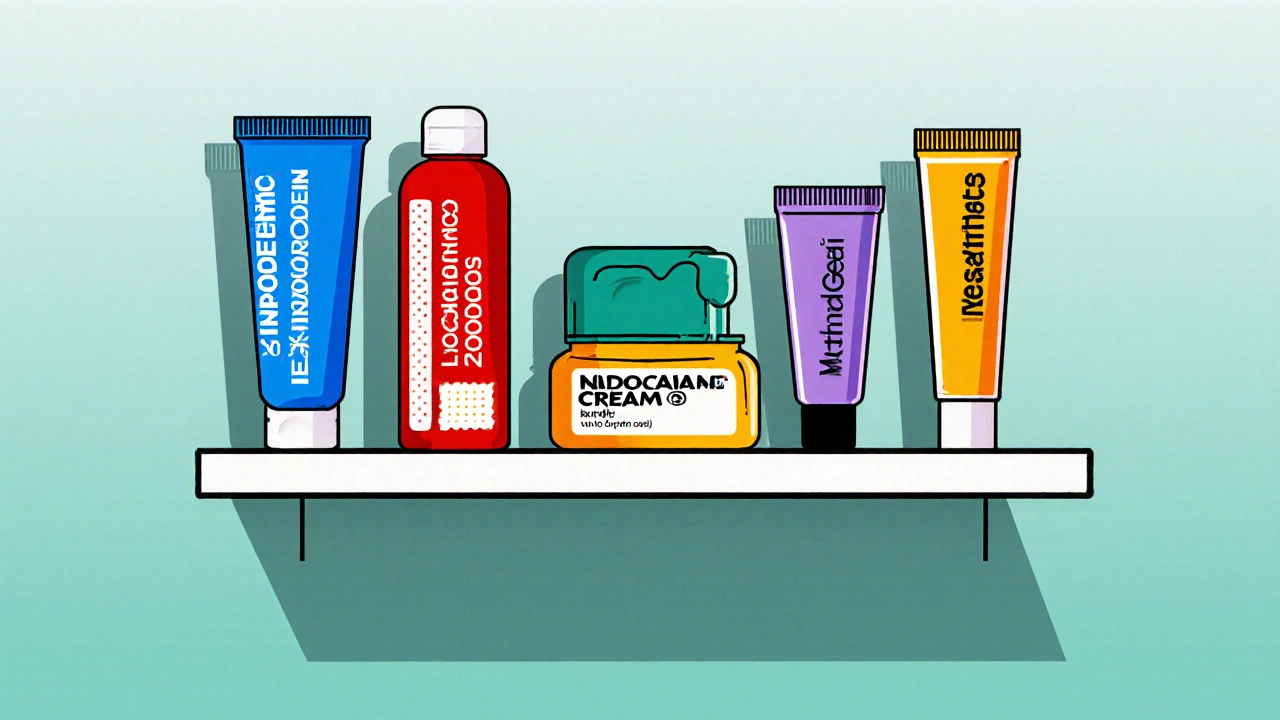Topical NSAIDs: What They Are, How They Work, and Which Ones Actually Help
When you reach for a pain reliever, you probably think of pills—but topical NSAIDs, nonsteroidal anti-inflammatory drugs applied directly to the skin to reduce pain and swelling. Also known as pain relief creams or gels, they’re a quiet alternative for people who can’t tolerate oral meds or want to avoid systemic side effects. These aren’t just soothing balms—they’re real medications with proven effects on joint pain, muscle strains, and arthritis flare-ups.
Unlike pills that travel through your whole body, topical NSAIDs like diclofenac gel or ketoprofen patches stay mostly where you apply them. That means less risk of stomach ulcers, kidney stress, or high blood pressure—common problems with oral NSAIDs. Studies show they work just as well as pills for knee and hand osteoarthritis, especially when the pain is close to the surface. You don’t need a prescription for all of them, but stronger versions (like diclofenac 1.5%) require one. The key is consistency: you need to use them regularly, not just when it hurts bad.
They’re not magic. Topical NSAIDs won’t fix a torn ligament or reverse severe joint damage. But for everyday aches—like sore shoulders from typing, stiff fingers in the morning, or a pulled back muscle—they’re a smart, low-risk option. People who take blood thinners, have kidney issues, or are older often find these gels and creams safer than popping pills every day. And because they’re applied locally, you avoid the drowsiness or dizziness some oral meds cause.
What you won’t find in most stores? A lot of honest advice. Brands focus on "natural" ingredients, but the real power comes from FDA-approved drugs like diclofenac, ibuprofen, or piroxicam in gel form. Some products mix in menthol or capsaicin for extra tingling—those are nice, but they don’t reduce inflammation. Only the NSAID part does that.
And here’s something most people don’t realize: timing matters. Apply these gels after warming up your skin—like after a shower or light exercise. Don’t wash the area right after. Wait at least 30 minutes before putting on a shirt or wrapping the area. And never use them on broken skin or with heating pads. That combo can cause serious burns.
The collection below dives into exactly this: real-world use cases, comparisons between brands, how they stack up against oral meds, and what to watch out for. You’ll find posts about how topical NSAIDs interact with other drugs, why some people swear by them while others feel nothing, and how to pick the right one without wasting money. Whether you’re managing arthritis, recovering from a sports injury, or just tired of stomach upset from ibuprofen, these guides give you the facts—not the fluff.

Diclofenac Gel vs. Topical Pain Relievers: Pros, Cons & Alternatives
- Oct, 17 2025
- 9
A detailed comparison of Diclofenac Gel with other topical pain relievers, covering how it works, pros and cons, side effects, cost, and when to choose each option.
Categories
- Health and Wellness (51)
- Medicine (36)
- Health and Medicine (30)
- Women's Health (9)
- Mental Health (8)
- Men's Health (7)
- Beauty and Wellness (4)
- Health Information (4)
Archives
- December 2025 (19)
- November 2025 (25)
- October 2025 (27)
- September 2025 (14)
- August 2025 (3)
- July 2025 (2)
- June 2025 (2)
- May 2025 (3)
- April 2025 (4)
- March 2025 (4)
- February 2025 (2)
- January 2025 (3)
- online pharmacy
- medication safety
- dietary supplement
- health benefits
- dietary supplements
- prevention
- fertility
- online pharmacy Australia
- treatment
- treatment options
- benefits
- connection
- drug interaction
- drug interactions
- pregnancy
- Cancer Treatment
- depression medication
- antidepressants
- quality of life
- anxiety treatment
